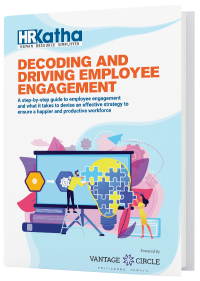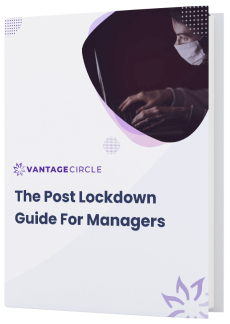Workplace Flexibility - What Employees Look Forward To In 2021

Do you want to increase employees' job satisfaction and productivity in your organization? Yes? Then Implementing workplace flexibility will definitely help you.
For both employers and employees, a stellar work-life balance is essential. It's indeed desirable to step back from a conventional 9-to-5 workplace system in today's work environment. It's time to shift towards a new workplace model that enhances employee happiness and productivity.
The probability is, this isn't the first time you're hearing about the rising need for workplace flexibility. It's quite a buzzword, indeed. But it's tough to say what people mean when they talk about it.
Definition Of Workplace Flexibility
Career expert Alison Doyle describes workplace flexibility as a 'strategy of responding to changing circumstances and expectations, and one that both employers and employees can adopt.'
A flexible workplace fulfills the interests of both the employee and the employer.
There are several ways that employers and employees can incorporate workplace flexibility. Let's know how it works.
How Does Workplace Flexibility Work?
Flexible employees
Flexible employees never say, "It is not my job." when they get a new assignment. Instead, they will adapt their approach to tasks based on organizational expectations and each situation's specific requirements.
Flexibility is a quality in most employers look for in employees. Irrespective of the nature of the position you are applying for, if you can show the interviewer how flexible you are to change direction, it will help your application.
Here are some examples of ways in which employees can display workplace flexibility.
-
Initiative to work extra hours during a rush at the end of the year or to meet a team deadline.
-
Learn new skills to increase productivity.
-
Being open to constructive criticism.
-
Offering to cover a colleague's duties when they're sick or on holiday.
-
Respond to emergencies pushing the work scheduled for the day aside.
Flexible employer
As reported by CNBC -
76% of millennial employees would be willing to take a pay cut for flexible working hours- Qualtrics and Accel Partners.
Read our blog on: Flexible Working Hours: 5 Ways It Boosts Productivity
We don't need much explanation of why employers need to incorporate more flexibility into their work culture.
Here are some arrangements that employers can make to initiate workplace flexibility.
-
Flextime- It allows employees to structure their workdays and weeks. It also includes when, where, and how long they work for.
-
Employee preference- Employers should be analyzing the personality and tastes of employees.
-
Compressed workweek- Employees get a shorter workweek using this strategy but usually also work the same number of hours. For instance, instead of five eight-hour days, an employee could work four 10-hour days. It all adds up to a 40-hour week, but the extra day off offers some added flexibility.
-
Part-time opportunities- An employee fills a part-time position with this arrangement that does not require a full-length workweek.
-
Remote work or work from home opportunities- Employees can take this opportunity to work from anywhere in the world. It generates greater flexibility and improves work-life balance.
Also read this guide: Work From Home Policy: A Definitive Guide For Managers
Benefits Of Workplace Flexibility
-
It helps employees achieve a balance between work and life, resulting in increased employee satisfaction and enhanced morale.
-
Employers also use workplace flexibility as a tactic for employee retention, engagement, and loyalty.
-
Flexibilities, like work from home, can also have a beneficial environmental effect by reducing long commutes. With a lesser need for office space, one can effectively practice cost-cutting, too.
-
Flexible employees are likely to do whatever is required to achieve the goal. Whether it means taking on additional roles, doing various assignments, or doing more at work, they are open to everything. Of course, they are much more productive than workers who can only perform one or two tasks. Getting employees who can move outside their job description suggests that employers do not have to find someone else to do more work.
-
Employees with flexible bosses love their workplace culture. It keeps them happy and satisfied. That, as a result, works in the employer branding strategy of the organization.
Listen to our podcast on: Everything you need to know about 'Employer Branding' with Devan Bhalla
Now, as we learn more about the benefits of flexibility in the workplace, let's know what flexibilities employees expect in 2021
Workplace Flexibility That Employees Expect In 2021
1. Choose the right approach
When it comes to organizational flexibility, it's tempting to believe that it only applies to letting workers come and go as they please. However, flexibility does not inherently mean a complete absence of structure. As discussed above, flextime, compressed work-time, remote working needs proper planning and structure.
There are several other approaches to flexible schedules of work. Employers should able to select the one that best suits the organizational needs.
2. Understand your employees
Not all jobs are conducive to time or place flexibility. However, most have certain duties that are amenable to being done at alternate times and places other than the office. Still, it's important to go through the steps and see how you could offer more flexibility for all of your employees. - Scott Behsan.
If you are willing to find out how to be more flexible at work, you will need to go beyond knowing roles to consider what your team members want as people. Consider asking them how they want to get flexible at work. It is the only way to boost happiness among your employees truly.
3. Encourage breaks
It is crucial to encourage and help your employees set aside their work, even for a short five-minute break. Or maybe you can extend the regular lunch break to allow team members to run errands or take care of personal needs. For workplaces where absolute flexibility is not viable, this is a successful compromise.
Breaks can boost productivity. They also offer workers an opportunity to relax, refresh, and interact with their peers.
4. Reconsider Worklife balance
Employees nowadays are more serious about their work-life balance. They want to pursue their hobbies and interests, keeping aside their work pressure. This new year, recognize your employee's lives outside the workplace. Providing them workplace flexibility is the best way to show that you care, as human beings, not just as employees.
5. Reduce gatherings/meetings
Be it for maintaining Covid-19 protocol or just to reduce the time spent on the so-called mandatory meetings, reducing the same can help the employees use the time in some productive ways. Managers should determine which sessions should remain and which should pass, whether the meeting in question is urgent, and whether every invitee needs to be there.
Listen to our podcast on: Reinventing The Organisation For The Post COVID-19 Phase
In brief, here’s what you should do-
-
Every team member should be 6 feet away from each other at all times.
-
More than 10 individuals are not permitted to gather in meetings.
-
Lunch breaks are planned into time frames to discourage gatherings.
-
Function in shifts, with a 1-hour break between shifts.
-
Promote the use of staircases. Adhere to the social distancing requirements in the case of using lifts.
-
‘Non-essential' visitors to offices should not be permitted.
-
Arrange transportation for public transport-dependent employees.
-
Offering masks to all workers.
-
Maintain a sufficient number of hand sanitizers.
-
Make thermal screening mandatory for all employees.

Vantage Circle is a simple AI-powered Rewards & Recognition Platform for upgrading your employee experience and engagement for better productivity.






